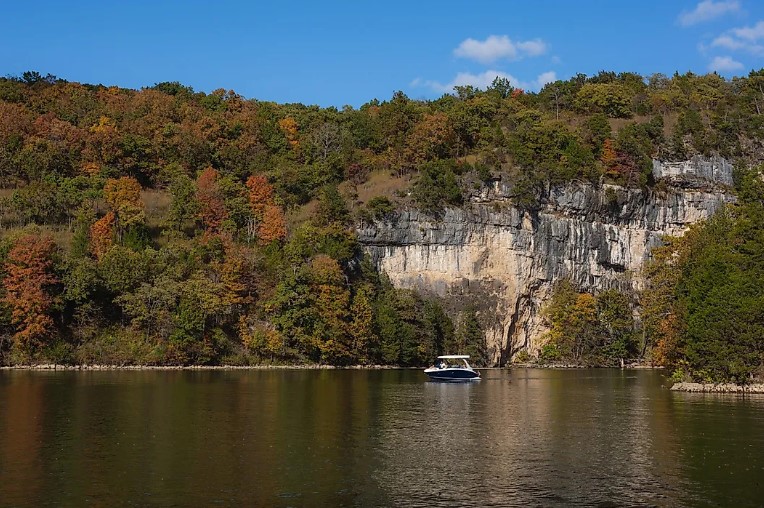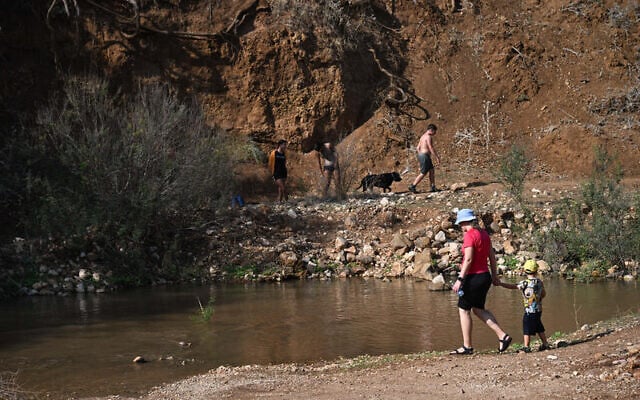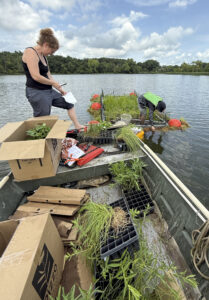Arkansas Water Plan Update: Summary of Activities Completed/Preliminary Timeline Extending Through 2026 Announced – JD Supra

Arkansas Water Plan Update: A Strategic Alignment with Sustainable Development Goals
Introduction and Mandate for Sustainable Water Management
The Arkansas Department of Agriculture (ADA) has initiated a comprehensive update to the Arkansas Water Plan (AWP), the state’s primary policy for long-term water resource management. This initiative directly supports the United Nations Sustainable Development Goals, particularly SDG 6 (Clean Water and Sanitation), by ensuring the availability and sustainable management of water for all Arkansans. The update, mandated by Governor Sanders’ Executive Order 23-27, involves a thorough analysis of the state’s water needs to align state policy with global sustainability targets.
Phase I Review and Stakeholder Engagement
The initial phase of the AWP update involved a comprehensive review of the existing plan to identify areas requiring reevaluation. A series of public and stakeholder meetings were conducted, embodying the principles of SDG 17 (Partnerships for the Goals). This inclusive approach integrates data, science, and public input to define water demands, supplies, and potential solutions, ensuring a collaborative framework for future water governance.
Completed Activities in Support of SDGs
To date, the ADA has completed several key activities that underpin various Sustainable Development Goals:
- Stakeholder and Technical Meetings: Engaged diverse groups to foster collaboration on supply, demand, flooding, water quality, and infrastructure, reinforcing SDG 17.
- Inter-Departmental Input: Incorporated expertise from the Arkansas Department of Health, Division of Energy and Environment, and Department of Commerce to create a holistic policy framework.
- Water Supply and Demand Analysis: Initiated a Water Supply, Demand, Gap Analysis, and Mitigation Strategy Review with the U.S. Army Corps of Engineers, directly addressing the core targets of SDG 6 by assessing water availability and stress.
- Infrastructure and Water Quality Analysis: Engaged Michael Baker International to analyze water and wastewater infrastructure, a critical step toward building resilient systems as outlined in SDG 9 (Industry, Innovation, and Infrastructure) and SDG 6.
- Climate Resilience and Safety: Partnered with the Commissioner of State Lands and the Corps of Engineers to complete a statewide levee inventory and engaged Olsson to develop a Flood Plan, enhancing community resilience to water-related disasters in line with SDG 11 (Sustainable Cities and Communities).
- Water Reclamation and Reuse: Commissioned a water reclamation study for Northwest Arkansas with Hawkins-Wier to promote water-use efficiency and recycling, a key strategy for achieving SDG 6.
Projected Timeline for AWP Finalization
The preliminary timeline for the completion of the AWP update extends through 2026, ensuring a thorough and data-driven process. The schedule is structured to achieve long-term sustainability objectives aligned with the SDGs.
- Water Supply and Demand Analysis: June 2025 – January 2026
- Water and Wastewater Infrastructure/Water Quality Analysis: June 2025 – May 2026
- Gap Analysis and Mitigation Strategy Review: June 2025 – May 2026
- Final Stakeholder Meetings: February – July 2026
- Publication of Final Plan: Summer 2026
Analysis of Sustainable Development Goals in the Article
1. Which SDGs are addressed or connected to the issues highlighted in the article?
The article on the Arkansas Water Plan (AWP) update connects to several Sustainable Development Goals, primarily focusing on water resource management, infrastructure, and disaster resilience. The key SDGs identified are:
- SDG 6: Clean Water and Sanitation – This is the most prominent SDG, as the entire article revolves around the state’s plan for long-term water management, including water supply, demand, quality, and infrastructure.
- SDG 11: Sustainable Cities and Communities – The article’s mention of developing a “Flood Plan,” creating a “statewide levee inventory,” and analyzing “water and wastewater infrastructure” directly relates to making communities more resilient and sustainable, particularly against water-related disasters.
- SDG 13: Climate Action – While not explicitly mentioned, planning for water availability and managing flood risks are critical components of climate change adaptation. The development of a “Flood Plan” is a direct action to strengthen resilience to climate-related hazards like extreme weather events.
2. What specific targets under those SDGs can be identified based on the article’s content?
Based on the activities described in the AWP update, several specific SDG targets can be identified:
- Target 6.3: Improve water quality by reducing pollution, eliminating dumping and minimizing release of hazardous chemicals and materials, halving the proportion of untreated wastewater and substantially increasing recycling and safe reuse globally.
- The article mentions that the state has “engaged Michael Baker International to complete water and wastewater infrastructure and water quality analyses” and “engaged Hawkins-Wier to conduct a water reclamation study.” These actions directly support the goal of improving water quality and promoting water reuse.
- Target 6.4: By 2030, substantially increase water-use efficiency across all sectors and ensure sustainable withdrawals and supply of freshwater to address water scarcity and substantially reduce the number of people suffering from water scarcity.
- The AWP’s core purpose is to “define water demands, water supplies, and potential solutions to our future needs.” The planned “Water Supply, Demand, Gap Analysis, and Mitigation Strategy Review” is a direct effort to manage water resources efficiently and address potential scarcity.
- Target 6.5: By 2030, implement integrated water resources management at all levels, including through transboundary cooperation as appropriate.
- The entire AWP update process is an example of integrated water resources management (IWRM). The article highlights the involvement of multiple stakeholders, including the Arkansas Department of Agriculture, Department of Health, Division of Energy and Environment, Department of Commerce, and the U.S. Army Corps of Engineers, along with public and stakeholder meetings, which is the essence of implementing IWRM.
- Target 11.5: By 2030, significantly reduce the number of deaths and the number of people affected and substantially decrease the direct economic losses relative to global gross domestic product caused by disasters, including water-related disasters, with a focus on protecting the poor and people in vulnerable situations.
- The state’s engagement of “Olsson to support development of the Flood Plan” and the initiative to “complete a statewide levee inventory” are direct measures to mitigate the impact of flooding, a major water-related disaster, thereby protecting communities and infrastructure.
3. Are there any indicators mentioned or implied in the article that can be used to measure progress towards the identified targets?
The article does not mention official SDG indicator codes, but it implies several activities and outputs that serve as practical indicators for measuring progress:
- For Target 6.3: The completion and findings of the “water quality analyses” and the “water reclamation study” serve as indicators. These studies would provide data on the state’s water quality and the potential for water reuse, which are key metrics for this target.
- For Target 6.4: The “Water Supply, Demand, Gap Analysis” is a direct indicator. The results of this analysis will quantify the level of water stress by comparing available supply with current and future demand, which aligns with Indicator 6.4.2 (Level of water stress: freshwater withdrawal as a proportion of available freshwater resources).
- For Target 6.5: The existence and periodic update of the Arkansas Water Plan itself is an indicator of the degree of IWRM implementation (Indicator 6.5.1). The documented process of holding “Stakeholder Meetings” and involving multiple government departments provides qualitative evidence of an integrated approach.
- For Target 11.5: The development and finalization of the state “Flood Plan” and the completion of the “statewide levee inventory” are key indicators. These represent the adoption and implementation of a state-level disaster risk reduction strategy, aligning with Indicator 11.5.1.
4. Table of SDGs, Targets, and Indicators
| SDGs | Targets | Indicators (as implied in the article) |
|---|---|---|
| SDG 6: Clean Water and Sanitation | Target 6.3: Improve water quality and increase water reuse. | Completion of “water quality analyses” and a “water reclamation study for Northwest Arkansas.” |
| SDG 6: Clean Water and Sanitation | Target 6.4: Increase water-use efficiency and address water scarcity. | Execution of a “Water Supply, Demand, Gap Analysis, and Mitigation Strategy Review.” |
| SDG 6: Clean Water and Sanitation | Target 6.5: Implement integrated water resources management (IWRM). | The comprehensive update of the Arkansas Water Plan (AWP) involving multiple stakeholders, technical focus groups, and public input. |
| SDG 11: Sustainable Cities and Communities | Target 11.5: Reduce the impact of water-related disasters. | Development of a state “Flood Plan” and completion of a “statewide levee inventory.” |
Source: jdsupra.com
What is Your Reaction?
 Like
0
Like
0
 Dislike
0
Dislike
0
 Love
0
Love
0
 Funny
0
Funny
0
 Angry
0
Angry
0
 Sad
0
Sad
0
 Wow
0
Wow
0
















































:focal(1500,1000)/https://media.globalcitizen.org/a6/9a/a69a4720-d8a1-4715-b596-18738d03c05c/rotary_polio_hero_image.jpg?#)







/countries/sri-lanka/photo-credit---dmc-sri-lanka.tmb-1200v.jpg?sfvrsn=dc298bcc_1#)


















